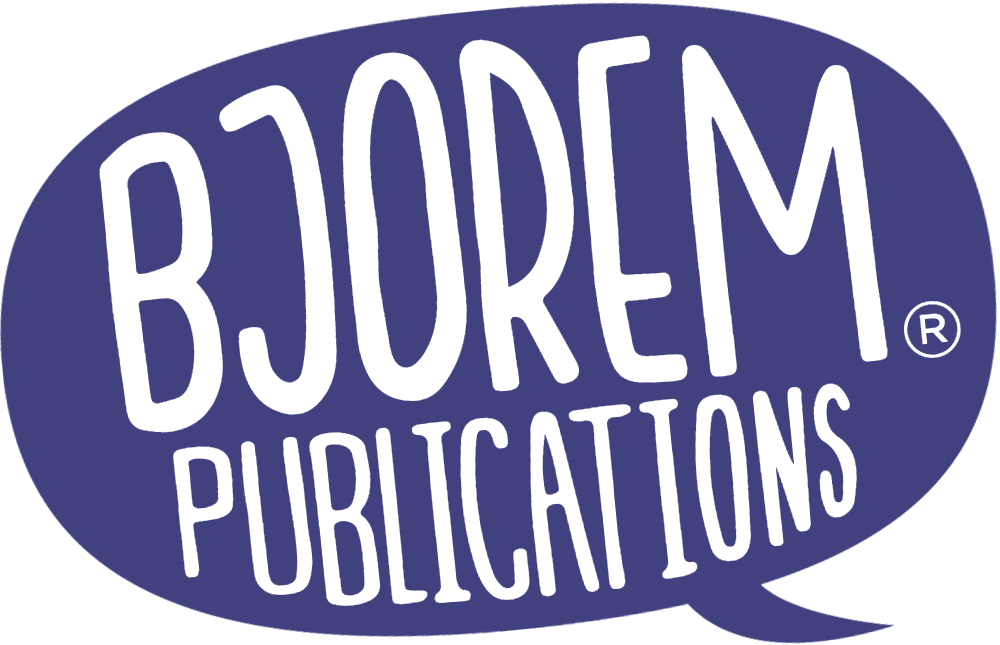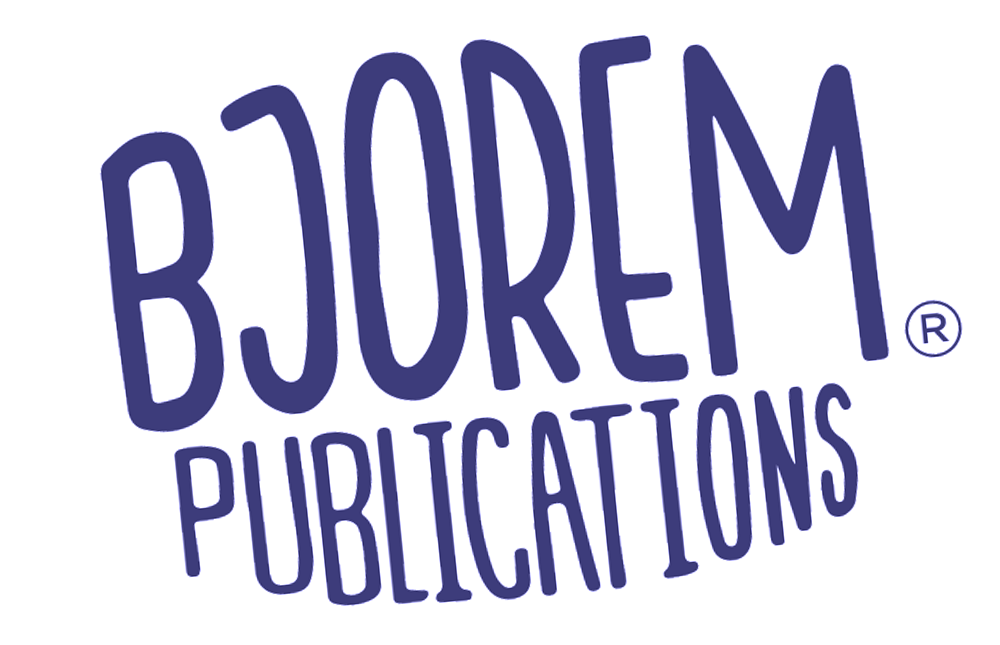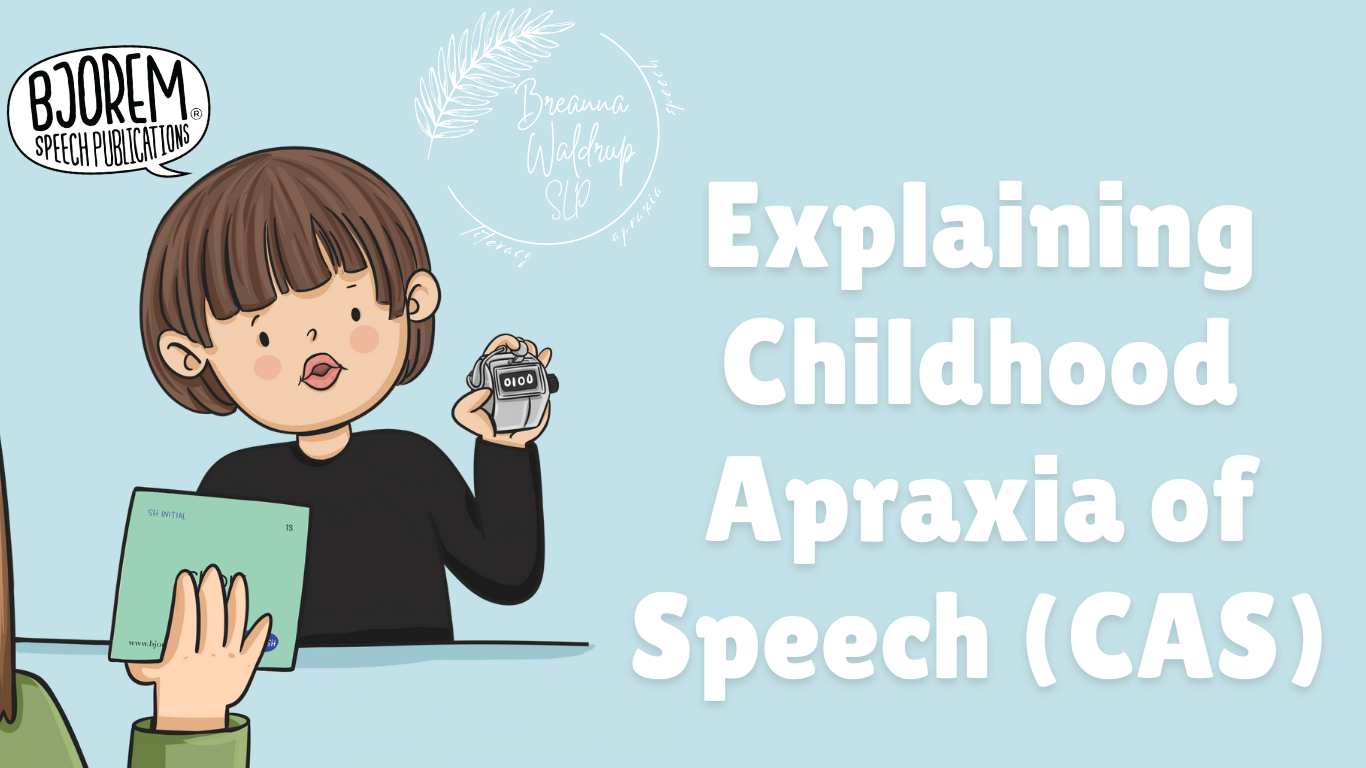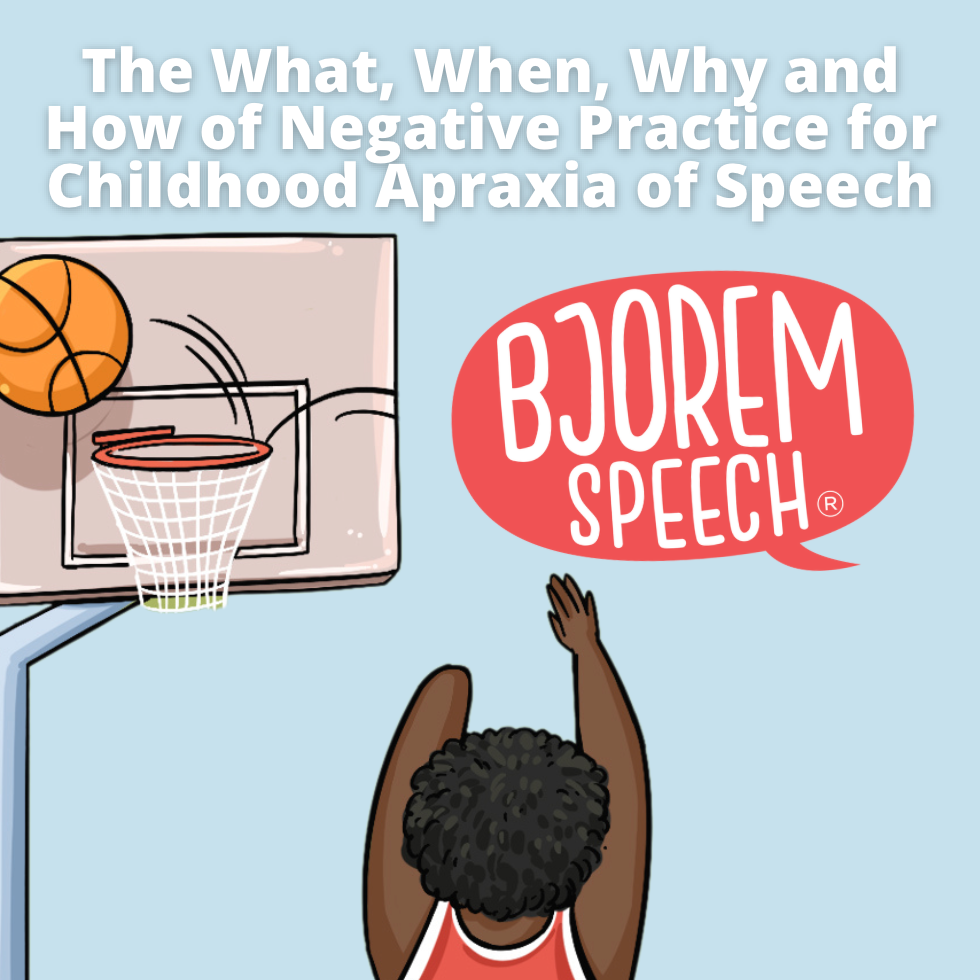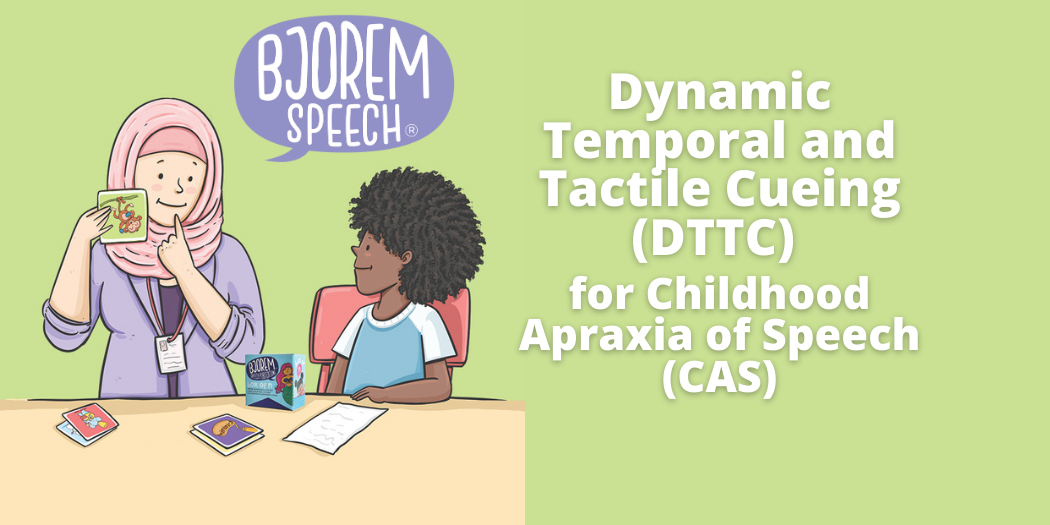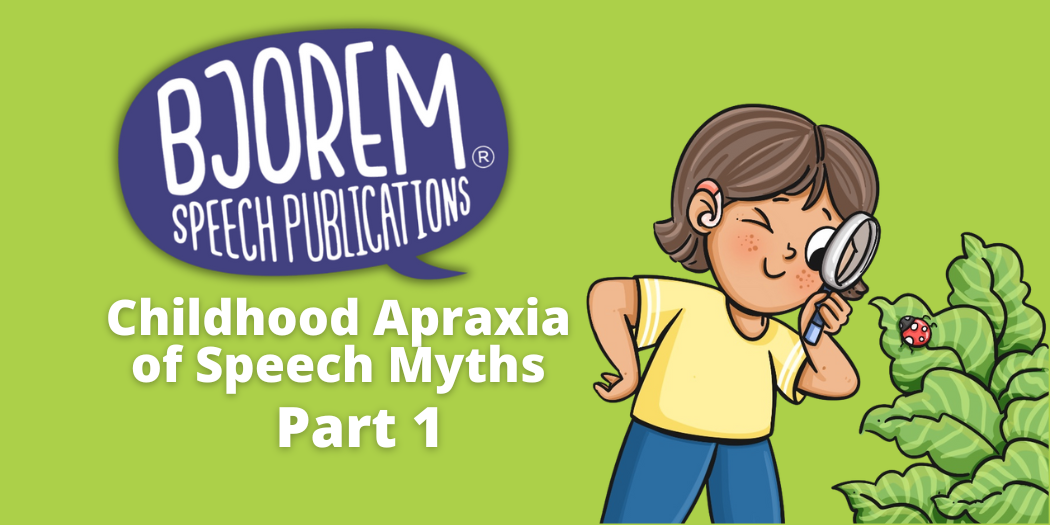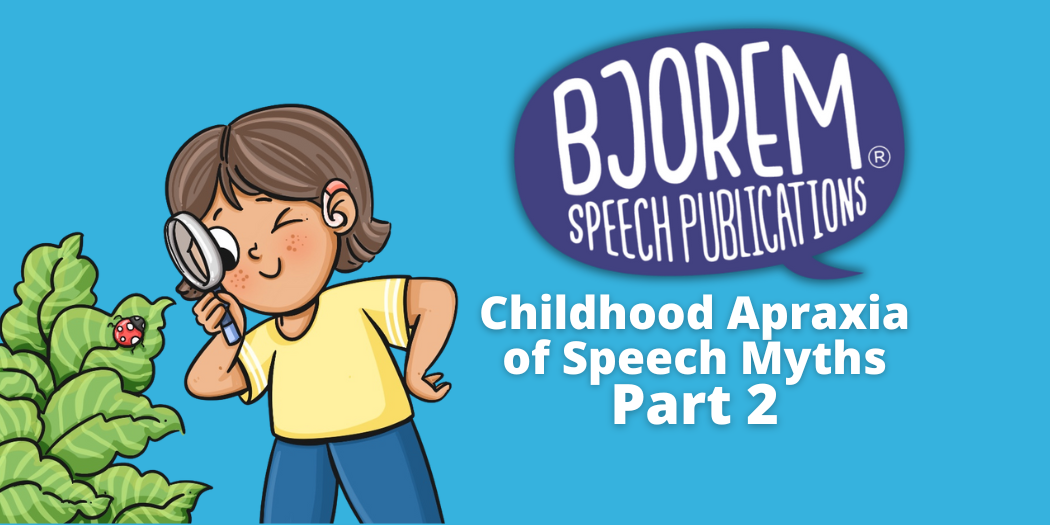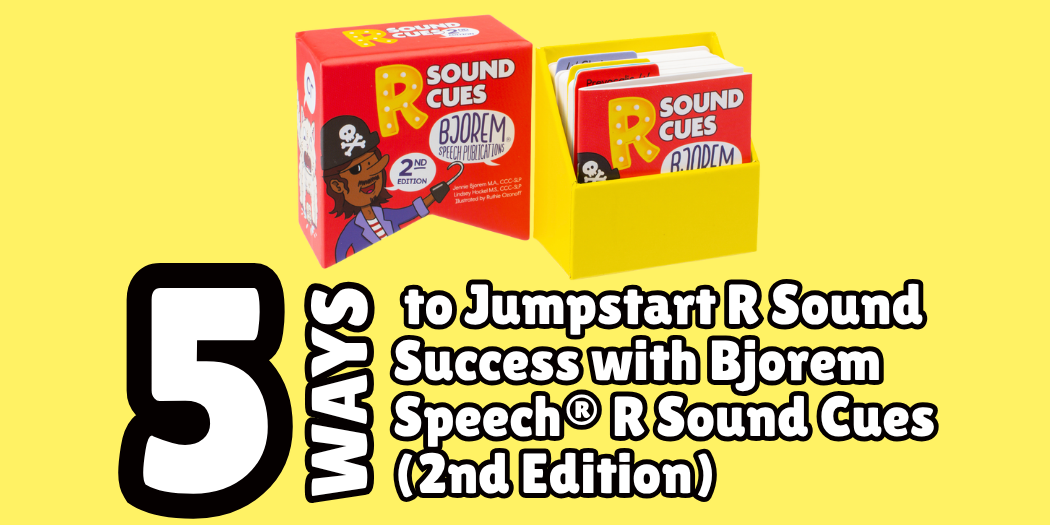Explaining Childhood Apraxia of Speech (CAS)
Written by: Breanna Waldrup, MS, CCC-SLP
If you're a speech-language pathologist who diagnoses childhood apraxia of speech (CAS) it's very important to think about how you explain this speech sound disorder to caregivers, families and other professionals.
First of all, let's look at the formal definition of CAS that we have from the 2007 ASHA technical report, that states that CAS is:
“A neurological childhood (pediatric) speech sound disorder in which the precision and consistency of movements underlying speech are impaired in the absence of neuromuscular deficits (e.g., abnormal reflexes, abnormal tone). CAS may occur as a result of known neurological impairment, in association with complex neurobehavioral disorders of known or unknown origin, or as an idiopathic neurogenic speech sound disorder. The core impairment in planning and/or programming spatiotemporal parameters of movement sequences results in errors in speech sound production and prosody” (ASHA, 2007).
In this definition there are several key components to unpack and make sure that we explain clearly to others.

CAS is a speech sound disorder
CAS is a speech sound disorder, not a medical diagnosis. This is an area of confusion for many families and even other professionals. Why? Perhaps part of the reason is that it is described as “neurological” or “neurogenic,” which is sometimes misinterpreted as it being a diagnosis given by a neurologist. According to ASHA (2007), the professional that should be diagnosing CAS is a speech-language pathologist who is competent, i.e. has the experience and knowledge of motor speech disorders needed. The current criteria for diagnosing apraxia is based on assessing for characteristics or features of childhood apraxia of speech across multiple speech tasks. Both the Mayo list (Shriberg et al, 2017) and Profile of Childhood Apraxia of Speech and Dysarthria (ProCAD) (Iuzzini-Seigel et al, 2022) list 10-11 features of CAS. A diagnosis of CAS is reached when a child demonstrates multiple characteristics (usually at least 3 or 4), each in multiple (at least three) speech tasks. Speech tasks typically include items such as imitating one, two and/or three syllable words, articulation and phonological tests, diadochokinetic rates, and more. Not only must we be trained and able to administer these speech tasks, we also must have a trained ear that is able to identify characteristics of CAS in the child’s responses during these speech tasks. This includes vowel errors, consonant distortions, prosodic errors, coarticulation errors (segmentation between sounds, syllables and words), slow rate, voicing errors, articulatory groping and more.

Another reason CAS may sometimes be confused as a medical diagnosis is that it is sometimes diagnosed by a physician. However, there are not any medical tests, such as brain imaging, that indicate CAS. If CAS has been diagnosed by a physician, it is important that a differential motor speech exam is conducted by a speech-language pathologist to confirm the diagnostic label.
Sometimes it is helpful to think about the corollary in adult motor speech. Adults may have apraxia of speech (AOS) caused by a neurological insult, such as a cerebrovascular accident (CVA) or traumatic brain injury (TBI). In this case, the CVA or TBI is diagnosed by physicians on the basis of the results of medical tests (bloodwork, imaging, etc). However, the communication disorder that may be the result of the neurological insult, such as a type of aphasia or AOS, is identified by a speech-language pathologist.
A diagnosis of CAS is not necessarily a reason to have a neurological exam. For many children with CAS, we do not know the medical cause (i.e. it is idiopathic). In some cases the cause might be assumed, such as a history of anoxic events or the presence of genetic differences. We should refer to a neurologist if a child has neurological deficits that have not been examined.
Neuromuscular deficits are not characteristic of CAS
CAS does not cause neuromuscular deficits such as low tone (hypotonicity) or weakness. If a child is exhibiting neurological deficits, that may mean that the child has a mixed motor speech disorder, in which they have both CAS and pediatric dysarthria or the child has dysarthria only and does not have CAS. Sometimes CAS is misdiagnosed in these cases, potentially because there are features that are shared between the two disorders (Iuzzini-Seigel et al, 2022). It’s also possible that the child has CAS and there are other causes of the neuromuscular deficits. So it is not that a child with CAS can’t have neuromuscular deficits, but if they do, the neuromuscular deficits are due to the presence of a concomitant disorder, not CAS. Usually in this case, if the child has not been seen by a neurologist, we should make a referral so that these neuromuscular deficits can be examined.
Inefficient motor planning and/or programming speech
When I’m discussing CAS with families I usually start by talking about communication. Communication includes all of the ways that we send and receive messages and can be broken down into language and speech. Language can be further divided into receptive language and expressive language. Receptive language is what we understand and includes our receptive vocabulary as well as comprehension of directions. Expressive language includes speech but also encompasses our vocabulary, grammar, and the other ways we communicate such as body language and gestures. Speech is specifically the way we produce sounds when we talk. CAS is a speech sound disorder. A child with CAS may or may not also have receptive and/or expressive language challenges.
I explain that CAS is a speech sound disorder in which the motor planning and/or programming to produce speech is inefficient. This means that the messages going to the speech articulators including the lips, tongue, jaw and the vocal folds, are not always coming through efficiently. The efficiency of the system can vary so there can be times when the message is being is coming through efficiently and the child produces speech that is accurate and there are other times when the system isn't as efficient so less of the message is accurate.
I also explain that speech is a complex motor act that requires very precise timing, sequencing and coordination of multiple speech subsystems. For example, we have to exhale at the right time since we talk on our outstream, move our vocal folds at the right time to create voicing and then we move our tongue, lips jaw all at the right time to the right place with the right amount of tension and duration to produce the specific sequence of speech sounds to produce the word or phrase. All of that movement is controlled by muscles and has to be planned and programmed by the brain. If just one part of that is a little off or not completely accurate then we can have a vowel error or a voicing error. For example, if our timing for voicing is just slightly off, the child may say “pat” instead of “bat.” Or if their tongue is slightly too far back, they may say “butt” or “bought” instead of “bat." If the system is sequencing at a slower rate, we may hear segmentation or a slow rate in the individual’s speech.

I try to make it clear that in many cases, children with CAS are understanding a great deal more language than they are able to communicate with speech. They often know what they want to say, but experience difficulty producing speech due to inefficiencies motor planning and programming. This is why it is important to provide other forms of communication or augmentative and alternative communication (AAC). I want children with CAS to have access to reliable and consistent methods of communication. At times, this may be speech. At other times, such as when interacting with new communication partners, in emotional situations or when they’re tired, or when they are trying to communicate something complicated, speech may not be an effective way to communicate. I explain that many research studies and meta-analyses of studies have shown that most children who are given AAC improve their verbal speech and using AAC does not decrease the use of verbal speech (Yuan et al, 2024). I want the child to have a reliable, robust and consistent form of communication as soon as possible. For many children with CAS, this means a communication device for at least a period of time. We will also provide intervention for CAS, with the goal of helping the child’s motor speech system become as efficient as possible, and hopefully resulting in speech being a consistent form of communication. However, if we introduce AAC early and the child has it available, it can serve as a support as their motor speech skills grow over time. For some children with CAS, AAC serves as a bridge to speech, while for others, it remains as a support for a longer period of time.

Last and arguably the most important point that I make when explaining CAS is that we know how to treat it. We know that speech therapy based on the principles of motor learning provided at the appropriate dosage is an effective treatment that helps the child’s motor planning and programming for speech become more efficient, resulting in fewer characteristics in their speech and improved intelligibility. Of course there are no guarantees and each child is unique and may have co-occurring challenges that will affect their progress and results. But at this point, we have several evidence-based treatment methods that have been shown to be effective in treating CAS – Dynamic Temporal and Tactile Cueing (DTTC), Rapid Syllable Transition Treatment (ReST), the Nuffield Dyspraxia Programme (NDP3) and Speech Motor Chaining (McCabe et al, 2024). The child may benefit more from one method over another or may benefit from more than one method at different times in their communication journey, since the methods were designed to treat children at different ages and communication levels. For example, many young children initially benefit from DTTC, but then progress to a modified-Nuffield approach, and then may benefit from ReST and/or Speech Motor Chaining. But overall, we understand how to improve motor speech efficiency.
Summary
In conclusion, when explaining CAS to families, caregivers and even other professionals, it’s important to highlight that CAS is a speech sound disorder that is caused by inefficiencies motor planning and/or programming speech. This means that the child knows what they want to say, but are not able to sequence the movements to produce accurate speech on a consistent basis. AAC may be an important part of the child’s communication plan, at least for a period of time. And most importantly, we have several effective methods to treat CAS, when used by an experienced speech-language pathologist at the appropriate dosage with family carryover. While there are no guarantees of outcomes, many children with CAS make significant gains in their ability to speak and some may even resolve CAS when they receive the appropriate treatment based on the principles of motor learning.
References:
American Speech-Language-Hearing Association. (2007). Childhood apraxia of speech [Technical report]. Available from www.asha.org/policy
Iuzzini-Seigel, J., Allison, K., & Stoeckel, R. (2022). A tool for differential diagnosis of childhood apraxia of speech and dysarthria in children: a tutorial. Language, Speech and Hearing Services in Schools, 1-21.
McCabe, P., Murray, E., & Thomas, D. (2024). Evidence Summary – Childhood Apraxia of Speech. https://rest.sydney.edu.au/wp-content/uploads/2022/07/CAS_evidence_brief_2022.pdf
Yuan W, Dunn M, Kennedy J, Hsiao YJ. (2024). Impact of Speech Generating Device Interventtions on Vocalizations of Individuals with autism and severe communication impairment: a systematic review of the research. Education and Training in Autism and Developmental Disabilities, v59, n3, p 233-256
Written by: Breanna Waldrup, MS, CCC-SLP

https://www.breannawaldrupslp.
